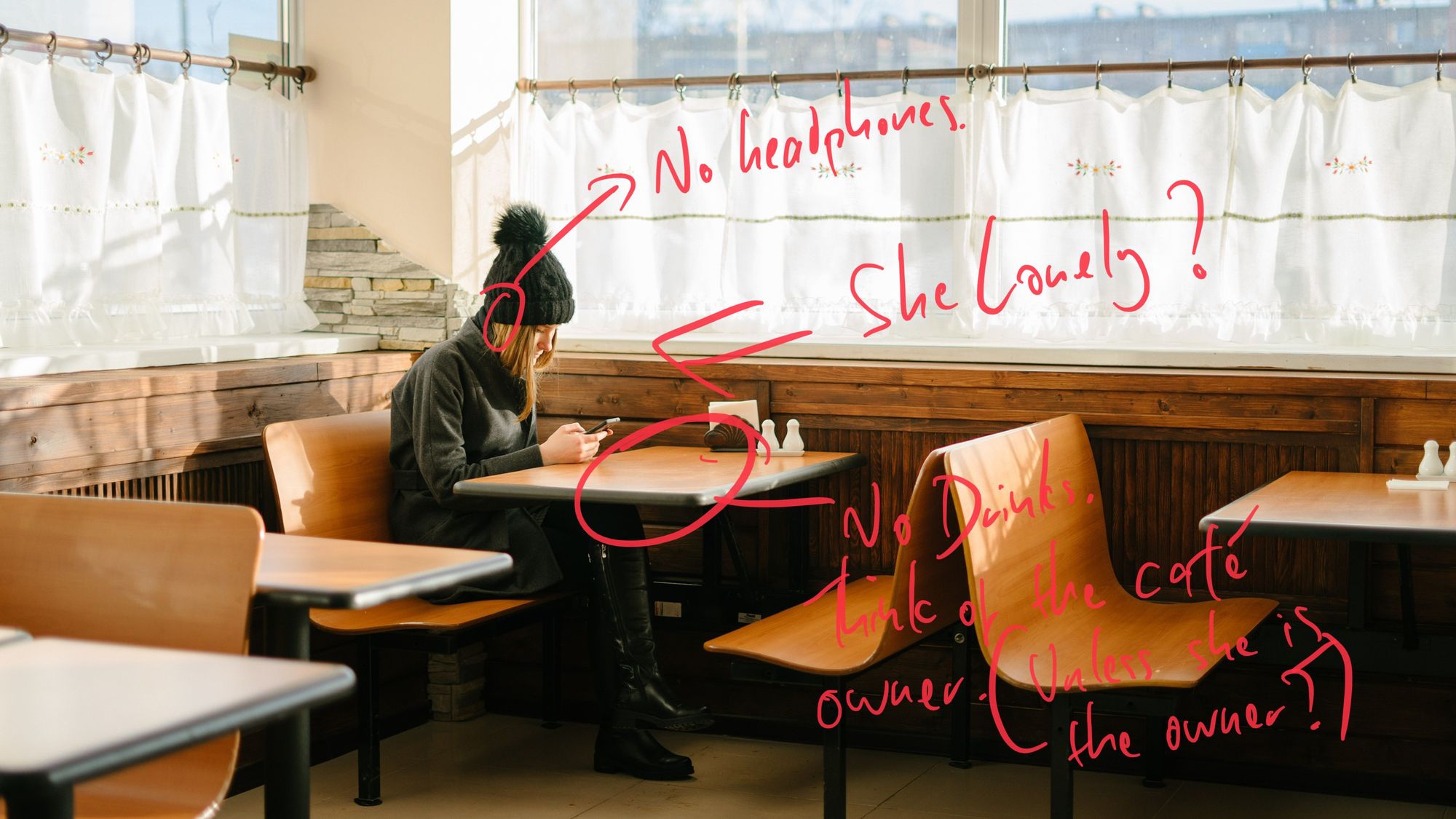Let's start with defining some terms.
Synchronous / asynchronous.
It used to be that if we weren’t in front of each other or on the phone, we were having an asynchronous conversation.
I might write you a letter on some paper, seal it inside an envelope, write an address on it, convert some money into stamp form and stick it on the envelope, put the envelope in a metal box, someone would pick it up (in the past, a few times a day) and take it to a big office where someone would read the address on the envelope and put it on a pile to be taken to that location, then someone would drive the letter to somewhere nearby, then someone would drive it to somewhere nearer, then someone would put the envelopes in a bag and walk around your neighbourhood with them until they passed the address that matched the one on the front of the envelope, then they’d post it through a hole in your door whereupon it was no longer their responsibility and at some point you’d pick it up, tear it open, read it and be annoyed at the nature of my complaint. I’m not given to threats, but for you I’m making an exception. So much so, that I’ve put it in writing.
Asynchronously.

I did all the above because when I told you all that your face, you simply told me to “go fuck myself”.
Synchronously.
Like, really synchronous.
Over the most recent decades, the temporal gap between sender and sendee, writer and reader has been reduced. Email has begun to dominate many of our lives to such an extent that we spend large amounts of our professional time simply moving it around. I do that a lot. My primary means of communication has been writing, responding to and sometimes even just forwarding electronic mail that I receive. I am a knowledge worker, you see. There are many (many!) problems with email, but it’s functional value and impact on the rhythm and pace of work communication cannot be overstated. Email etiquette begins to become a ‘thing’ we consider. For many that’s triggered by the first email they receive from someone inside corporate America. Characterised by a strategic purity and focus that rarely extends to more than three sentences, these mails often also don’t include a personal ‘sign-off’. At first, this might appear rude, but the fact is you know who its from because it fucking says so in the ‘from’ line. There’s no code to be cracked here. Get over it.
For me, being able to mix and match levels of intimacy in email becomes a fun way of playing with the form. I recommend you try injecting small clauses of impossibly kind words into your work
Anyway.
This isn’t even about email or (a)synchronousness. This is about symmetry.
Like a low-grade mirror.

In recent months, both due to budget constraints, an effort to reduce our carbon footprints and a suspected dislike of each other’s company, we’ve been making attempts to travel less. With a team as distributed as some of the ones I work in, being able to communicate remote becomes very important.
But but but...
There’s a working assumption that we can all just ‘hop on skype’ and that that would somehow bridge the gulf between us. That all we really need is a 3mb upstream and it’ll be like we’re actually IN THE SAME ROOM.
This is emphatically not the case. Not only is this not the case, but the friction created by the lack of SYMMETRY between the participants in the call increases exponentially, the more callers you add.
We need to pay much more attention to this. Even if we can’t achieve a level playing field with this kind of communication, we at least need to notice and accommodate the huge fucking dents on the pitch.
If you’re having a board meeting and 70% of the people are in the room, one is on a video hangout, and one is just audio - then the person who is working just on audio is (and should be) feeling rightly paranoid. Unable to see the eye-rolls and across-the-table knowing glances in response to the stupid shit they are saying, they’ll just carry on. We have to pay more attention to video calls and the quality of them.
If we’re going to have one, here’s some guidelines :
- Get the room(s) ready 10 min beforehand. All of them. You know that time on the agenda where it says “meeting starts”, that’s when the meeting FUCKING STARTS. It’s not when you first try and dial in and find your headset and turn the radio down and put a shirt on.
- You! The chair! Your role in this kind of setting is about 1000% more important than if everyone is in the same room. And it’s REALLY important then too. You need to grab this meeting by the balls/tits and run it properly. You need authority and you need to guide people through it. ESPECIALLY for the people who aren’t in the room.
- Headsets. Insist that people wear them. If you’re a boss, BUY your team cheap headsets just for the purpose of these calls. They are ESSENTIAL. The cognitive overhead of having to squint your hearing to try and make out what one person is saying is unfair and unforgivable. It’s like motorway driving at night. In the fog. It’s exhausting.
- Ambient noise and mute buttons. Whatever platform you’re using, it probably has a mute button. Fucking use it. The default position should be mute. IF YOU ARE NOT TALKING THEN PRESS MUTE. This will improve the quality of the call AND keep people awake. The chair (see above) can playfully call people in unexpectedly to check that they’re awake and engaged (although of course you should be able to see that through the video too).
- AIM FOR SYMMETRY - this is the key one. If you’re doing video, get everyone on video. We need to aim for each participant having the same chance at giving their shitty contribution to your dumbass meeting. You owe them that.

